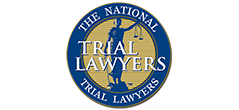In Georgia, burn injuries are not only painful and traumatic but can also lead to lasting physical and emotional challenges for victims. When a burn accident occurs, understanding who is responsible can be essential in determining the appropriate course of action for the injured party. However, establishing liability in these cases often requires a careful analysis of various factors. From the cause of the accident to the environment where the incident happened, each detail plays a role in deciding who is held responsible. With the impact that burn injuries can have on a person’s life, both immediately and in the long term, it’s essential to thoroughly examine the circumstances that led to the injury to see if someone can be held legally accountable. At, Malchow Johnson Injury Lawyers , we are here to guide you through the legal process and help you navigate the complexities of your case.







Types of Burn Injuries and How They Impact Liability
Burn injuries vary in severity and can result from many different types of accidents. Burns are generally classified by their degrees, from first-degree, which affects only the outer layer of skin, to fourth-degree, which can damage not just skin but also muscles and even bones. The cause of the burn often plays a significant role in determining liability. Burns may arise from fires, contact with hot surfaces, exposure to chemicals, electrical malfunctions, or even radiation in some industrial settings. In Georgia, burn injuries are particularly common in workplaces, where employees may be exposed to dangerous equipment, materials, or chemicals. The specific type and cause of a burn injury directly influence the assessment of liability because each type may involve different responsible parties and legal considerations.
For example, if a burn occurred due to a chemical spill at a workplace, the responsibility might fall on the employer for not providing adequate safety measures, or perhaps the manufacturer of the chemical if it was not properly labeled with hazard warnings. Similarly, in cases involving electrical burns, the liable party might be a property owner who failed to maintain safe wiring or an equipment manufacturer who produced faulty equipment. Each type of burn injury may require different evidence to show who had a duty to keep the area or equipment safe and who might have failed in that responsibility.
Examining the Duty of Care and Negligence
In any personal injury case, including burn injuries, one key element in establishing liability is proving that someone owed a duty of care to the injured person and breached that duty. In simple terms, a duty of care means that a person or company had an obligation to act in a way that would prevent harm to others. In Georgia, determining whether someone owed a duty of care depends on the relationship between the involved parties. For example, employers owe their employees a duty to maintain a safe working environment, and property owners owe visitors a duty to keep their premises reasonably safe from hazards.
If someone fails to fulfill their duty of care, it can be considered negligence. Negligence is one of the most common grounds for establishing liability in burn injury cases. Proving negligence requires showing that the responsible party did not take reasonable precautions that could have prevented the accident. If a person suffers a burn injury because a property owner failed to fix a known electrical hazard, for instance, this would likely constitute a breach of the duty of care. Negligence also often includes actions such as failing to warn people of potential dangers or not providing safety equipment to employees working in hazardous conditions. Each of these actions or lack of action plays a vital role in determining whether someone’s failure to fulfill their duty directly led to the burn injury.
Causation and Proving Responsibility
For liability to be established in a Georgia burn accident case, there must be a direct link between the negligent party’s actions and the injuries sustained. This element, known as causation, means that the injury would not have occurred if the responsible party had acted appropriately. Proving causation requires clear evidence that the burn injuries were a direct result of the other party’s breach of duty. In burn cases, causation can sometimes be difficult to establish because injuries may result from multiple factors, such as poor maintenance, defective products, or even actions by the victim themselves.
Evidence in proving causation may include medical reports, accident reconstruction, eyewitness accounts, and testimony, which can help demonstrate how the accident happened and why the responsible party’s actions or inactions directly caused the burn injuries. For instance, if a person suffers from severe burns due to a faulty water heater that exploded, proof that the heater was defective or improperly installed could establish a connection between the injury and the responsible party’s failure to ensure safety. Causation is a critical part of any liability case in Georgia, and without it, it may be challenging to hold someone accountable.
Role of Evidence in Establishing Liability
In burn injury cases, evidence plays a central role in determining who is liable for the injuries. Various forms of evidence can support a case, such as photographs of the accident scene, medical records detailing the severity of the injuries, safety inspection reports, and witness testimonies. Surveillance footage, if available, can also be useful in showing the conditions that led to the accident. In some cases, physical evidence, like faulty wiring, broken equipment, or spilled chemicals, may be critical in establishing what went wrong and who is responsible.
Medical records are essential for showing the extent of the burn injuries and how they have affected the victim’s life. Detailed medical documentation can also demonstrate the treatment required and any long-term health issues the victim may face. Accident reports, especially if they were completed by safety authorities, provide an official account of what happened and often identify potential causes. Each piece of evidence strengthens the case and aids in painting a clear picture of the events that led to the injury. When multiple forms of evidence align to show a failure to provide safe conditions, it can make a powerful case for liability.
Choosing a Personal Injury Attorney How Much Is My Personal Injury Claim Worth?Related Videos
Understanding Comparative Fault in Georgia Burn Injury Cases
Georgia follows the rule of modified comparative negligence, which means that if an injured person is found to be partially at fault for the accident, their compensation may be reduced according to their share of responsibility. If the injured person is found to be more than 50% at fault, they may not be able to recover any compensation at all. This rule is important in burn accident cases because there may be situations where the injured party’s actions contributed to the incident. For instance, if an employee fails to follow safety protocols and is burned, the court may assign partial fault to them.
Determining comparative fault involves assessing each party’s actions leading up to the incident. If the responsible party claims that the victim played a role in causing their injuries, they must provide evidence to support this claim. Comparative fault can influence the amount of compensation awarded in a burn injury case, which is why it’s crucial to present strong evidence that clearly shows the negligence of the responsible party outweighed any potential fault on the victim’s part. This aspect of Georgia law encourages both parties to be cautious and follow safety guidelines, but it also underscores the importance of gathering strong evidence to minimize any claims of shared responsibility.
Impact of Product Liability in Burn Injury Cases
Sometimes, burn injuries result from defective products rather than negligence on the part of an individual or property owner. In Georgia, product liability law holds manufacturers, distributors, and retailers responsible for injuries caused by defective or dangerous products. If a burn injury is caused by a malfunctioning appliance, faulty wiring, or any product that did not operate as intended, the victim may pursue a product liability claim. To establish product liability, it must be shown that the product had a defect that made it unreasonably dangerous and that this defect directly caused the burn injuries.
Product defects may fall into three main categories: design defects, manufacturing defects, and failure to warn. A design defect exists when the product is inherently dangerous due to its design. A manufacturing defect occurs when a product is assembled or produced incorrectly, making it dangerous even if the design is sound. Failure to warn refers to a situation where the manufacturer did not provide adequate instructions or warnings about the product’s risks. In cases of burn injuries caused by products, proving product liability requires showing that the product was used as intended and that the defect led to the injury. Georgia’s laws allow victims to hold companies accountable for producing and selling unsafe products, making this an important factor in burn accident cases.
Seeking Legal Assistance for Burn Injury Cases
Establishing liability in a Georgia burn accident case involves understanding the complex interplay of duty of care, negligence, causation, evidence, comparative fault, and potential product liability. Burn injuries can be life-altering, and victims often face prolonged medical treatments, financial stress, and emotional pain. Each factor discussed here contributes to building a strong case for holding the responsible party accountable. If you or a loved one has suffered a burn injury in Georgia and believe another party is at fault, you may need the guidance of an attorney to pursue justice.
Malchow Johnson Injury Lawyers understands the challenges burn injury victims face and is dedicated to helping clients navigate these difficult times. Our team is committed to gathering evidence, determining liability, and fighting for the compensation you deserve. Contact us today to learn how we can assist you in your journey toward recovery and justice.





